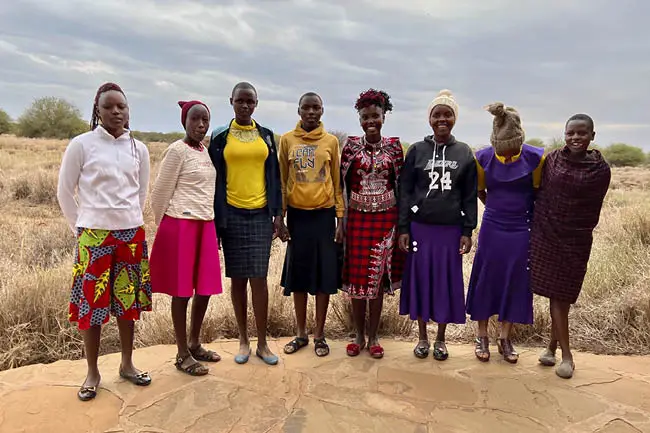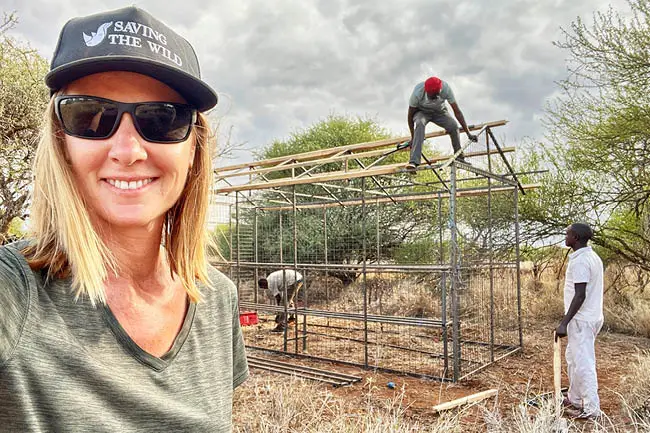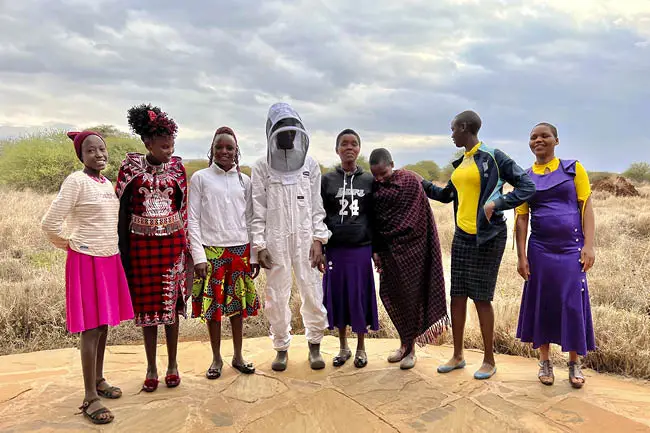
Order Confirmed
We’re sorry, the page you requested could not be found.
It was at the Dubai World Expo towards the end of last year that we announced at the Comvita New Zealand event that our next project would be ‘Saving the Wild WOMEN’: Financial independence through bee keeping.
Spanning Southern Africa and East Africa, Saving the Wild WOMEN is our lifetime commitment to women empowerment and cultural diversity.
Our inaugural project begins in Kenya, continuing the race to secure wild land in the Kimana Wildlife Corridor in the foothills of Mt Kilimanjaro, except this time there is a cultural shift taking place in what is traditionally a patriarchal society. We’re betting on young Maasai women living in Kimana to lead from the front, and gain financial independence through bee keeping and the arts - beadwork embodies the Maasai culture, representing beauty, tradition, strength, and sometimes even social status.
Currently aged between 16 and 21, over the next four years they will be mentored by world class Comvita bee keepers and entrepreneurs, and in four years time they will be handed the keys to the business, or in this case, the bee houses.

Currently with 100 colonized hives and facing a drought, the priority right now is external monitoring and to ensure the bees are cared for with sufficient food and water until the rains come. Our tiny superheroes are being fed sugar water and bananas twice a week to keep their strength up, and nearby water sources include a pumped water hole for the animals, and a strategically positioned bird bath.
Our team on the ground have also greased the bee hive stands to keep ants out, and this time no honey badgers are getting in - all the bee houses have been reinforced from day one with a cement floor. The elements of nature certainly tests us!

Now we anxiously wait for the rains, which we all hope will come in October. Sometimes they come later. Every day counts. October going into November is a critical time for the bees, and that is why Carlos Zevallos, Comvita's apiary branch manager in Whanganui, will be joining us on the ground at the start of November. The hives will need to be inspected and cared for, and the Kenyan team of ten are very much looking forward to learning from the best.
We’re also all looking forward to Carlos from Comvita packing his suitcase full with bee suits. The local bee suits are not great, often resulting in people getting stung, and African bees are no joke! They are far more aggressive than the docile European bees, although their venom is the same.
Fortunately we had just enough Comvita bee suits for the brave team of four that moved the bee hives from the very tall Acacia trees to their newly built bee houses where they can be properly cared for.
It is the Kenyan way to hang bee hives in trees to slightly increase the rate of colonisation. And it’s incredible to witness these ‘tree gymnasts’ climbing trees and moving bees, but after more than 15 hours staring at very tall trees over a two night period, and reeling with anxiety at the thought of a fall, I made the decision that this will never happen again if its a Saving the Wild project.


A few more pots of honey is just not worth the risk, and the team agrees. Times are a changing! And I never felt that more than on the day of our wrap party when everyone came together: the team who had built the bee houses, the team who had then moved the bee hives to their new homes, and of course the young women with a future ahead of them unlike they never imagined…
“This is very unusual,” said my Maasai friend who is a bee keeper and who’s sister is one of the Saving the Wild WOMEN. He stood to my right, and in a half circle of chairs sat all the men. And to my left was a half circle of young women aged between 16 and 21, and the two of us hovered in the middle.
“How do you mean?” I asked, ticking through my brain all the unusual things that had taken place in the five weeks leading up to this day.
“Well, the men and women eating together like this, especially girls so young.”
As we spoke quietly one of the fathers of the girls was slicing up the goat that had just been cooked on a fire - a goat marking this a very special celebration in Maasai culture.
“Have I offended the elders?” I asked cautiously.
“No, no,” he said, cutting me off with a broad smile. “This is good. Everyone is happy. We did good.”
There were eight fathers there that night who had joined their daughters for the celebration, as well as another dozen men who work at the Amboseli camp where the bees now live. None of their wives had ever had the opportunity to work, even though for a long time now this has been a simmering desire.
And yet to my left sat eight young ladies who were not only being trained in a vital skill to protect nature in need, but would eventually become business owners.
Maasai women empowerment. The dream is now real.


We’re sorry, the page you requested could not be found.